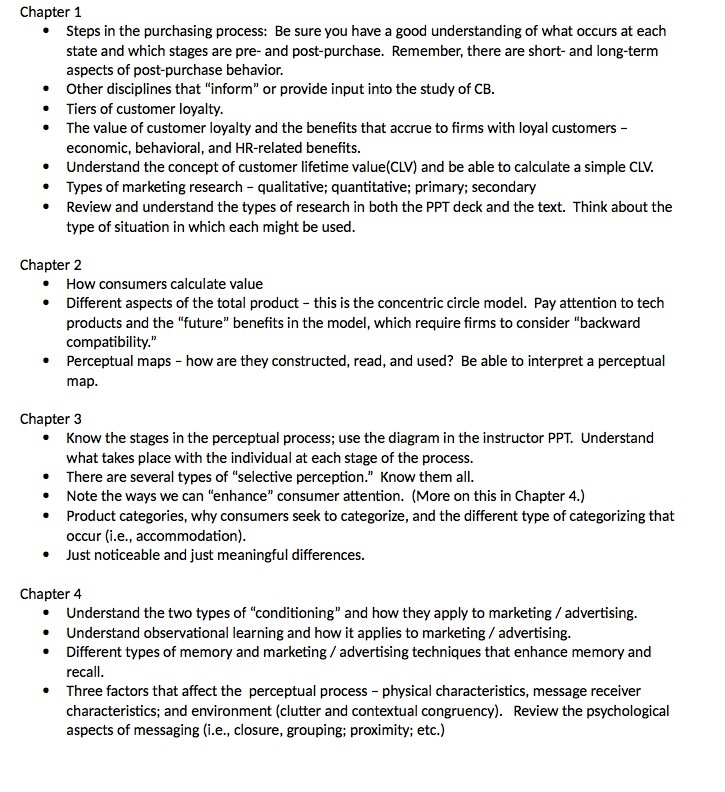Chapter 1 0 Steps in the purchasing process: He sure you have a good understanding of what occurs at each state and which stages are pre- and post-purchase. Remember, there are short and longterm aspects of post'purchase behavior. * Other disciplines that "inform\" or provide input into the study of CB. * Tiers of customer loyalty. * The value of customer loyalty and the benets that accrue to rms with loyal customers economic, behavioral, and Hkirelated benets. 0 Understand the concept of customer lifetime valueiCLv} and be able to calculate a simple CW. 0 Types of marketing research qualitative; quantitative; primary; secondary t Review and understand the types of research in both the PPT deck and the text. Think about the type of situation in which each might be used. lCiha pter 2 I How consumers calculate value 0 Different aspects of the total product this is the concentric circle model. Pay attention to tech products and the "future\" benets in the moclel, which require rms to consider rlbackward compatibility." * Perceptual maps how are they constructed, read, and used? Be able to interpret a perceptual map. Chapter 3 0 Know the stages in the perceptual process; use the diagram in the instructor PPT. Understand what takes place with the individual at each stage of the process. * There are several types of "selective perception." Know them all. * Note the ways we can \"enhance" consumer attention. {More on this in Chapter 4.] * Product categories, why consumers seek to categorize, and the different type of categorizing that occur {i.e., accommodation}. 0 Just noticeable and just meaningful differences. lChapter 4 * Understand the two types of \"conditioning" and how they apply to marketing I advertising. * Understand observational learning and how it applies to marketing I advertising. * Different types of memory and marketing I advertising techniques that enhance memory and recall. 0 Three factors that affect the perceptual process physical characteristics, message receiver characteristics; and environment {clutter and contextual congmency]. Review the psychological aspects of messaging {i.e., closure, grouping; proximity; etc.]







